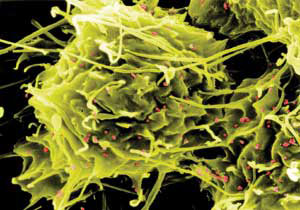Understanding Nanotoxicology: A Comprehensive Guide
Definition: Nanotoxicology is the study of the toxicity of nanomaterials. Due to their unique properties, nanomaterials interact with biological systems in ways that are fundamentally different from larger materials, raising concerns about potential health and environmental impacts. This field aims to understand, evaluate, and mitigate the risks associated with the use of nanotechnology.

Introduction to Nanotoxicology
Nanotoxicology is an essential discipline within nanotechnology focused on assessing the potential hazards that nanoparticles can pose to the environment and human health. Given their nanoscale size, these particles have unique physicochemical properties, which can lead to distinctive biological interactions.
Contextual Examples of Nanotoxicology
One prominent example of nanomaterials under scrutiny for potential toxicity is carbon nanotubes (CNTs). Due to their exceptional strength and electrical conductivity, CNTs are used in various applications, from electronics to biomedical devices. However, their needle-like shape has raised concerns about lung toxicity, similar to asbestos fibers, leading to inflammatory responses and fibrosis when inhaled.
Another example involves silver nanoparticles (AgNPs), widely used for their antimicrobial properties in consumer products like clothing and medical devices. While beneficial for preventing bacterial growth, AgNPs can be toxic to human cells and the environment. They may cause cellular damage through mechanisms such as oxidative stress and genotoxicity, and when released into water bodies, can adversely affect aquatic organisms.
Why Nanotoxicology Matters
The increasing use of nanomaterials in industry, medicine, and consumer products necessitates a thorough understanding of their potential impacts. Nanotoxicology provides insights into how these materials interact with biological systems, including their absorption, distribution, metabolism, and excretion (ADME) processes, as well as potential toxicity mechanisms.
Key Concepts in Nanotoxicology
- Size and Surface Area: The small size and high surface area of nanoparticles can lead to higher reactivity and bioavailability, potentially causing toxicological effects.
- Chemical Composition: The composition of nanoparticles can influence their toxicity. For example, metal nanoparticles may release toxic ions.
- Shape and Structure: The shape and structure of nanoparticles can affect their ability to penetrate biological barriers and their interaction with cells and tissues.
- Agglomeration and Stability: How nanoparticles agglomerate or remain stable in biological or environmental systems can influence their distribution and potential toxicity.
Assessing Risks and Safety
Nanotoxicology research involves both in vitro and in vivo studies to assess the safety of nanomaterials. This includes evaluating cytotoxicity, genotoxicity, immunotoxicity, and environmental toxicity. Regulatory frameworks and guidelines are also being developed to ensure safe handling and application of nanotechnologies.
Environmental Implications
Beyond human health, nanotoxicology also considers the environmental impact of nanomaterials. Studies focus on the lifecycle of nanoparticles, their persistence, bioaccumulation, and potential to cause ecological harm.
Advancements in Nanotoxicology
Recent advancements in analytical techniques, such as high-throughput screening and omics technologies, have significantly improved our ability to assess the toxicity of nanoparticles. Computational models are also being developed to predict nanoparticle behavior and interactions in biological systems.
Future Directions
The field of nanotoxicology is rapidly evolving, with ongoing research aimed at better understanding nanoparticle-biological interactions and developing safer nanomaterials. Collaboration between scientists, industry, and regulators is crucial to harness the benefits of nanotechnology while minimizing its risks.
Further Reading
Materials Today: Proceedings, A review on Nanotoxicology: Aquatic environment and biological system
